Photo

Fate of Brave Girls
It’s heartening to note that the courageous girls who survived the siege also escaped the horrors of assault. Tragically, many lost their lives as they were mistaken for men and mercilessly shot whenever they appeared. However, those who survived avoided dishonor. Among the hundreds who gathered when we arrived in the village, I saw many defiant gazes from bright eyes, undeterred despite the absence of their tresses. While some women suffered assault, particularly those who surrendered early or attempted to flee into the fields upon the Bashi-Bazouks’ approach, the majority were spared.
Terror-Filled Nights
Describing the nights spent in the church, the Armenian girl painted a terrifying picture. The constant fear of attack, the sounds of distressed children, the lamentations of women witnessing their homes ablaze, and the distant shouts and gunfire all contributed to an atmosphere of terror. The crackling flames illuminated the night sky, casting eerie shadows and engulfing the surroundings in smoke. Despite the chaos, the people in the church found solace in prayer, illuminated by the flickering glow. With the crowded conditions, lying down was impossible, and those who managed to sleep did so sitting or standing. Sleep was elusive for most, particularly amid the children, as the intensity of the situation left little room for rest. This harrowing ordeal persisted until Thursday afternoon Guided Turkey Tours .
A Shift in Events
On Thursday afternoon, a change occurred. Achmet-Aga, the Bashi-Bazouks’ leader, sent word to Philippopolis, claiming that the village had revolted, justifying his attack. Unlike the people of Batak who surrendered and faced slaughter, these villagers refused to submit quietly.
0 notes
Photo

Gathering of Officials
In the chamber known as the “Lion House,” Kaymakam Pasha, along with viziers, scholars, the Sheikhulislam, and other state officials, assembled.
Announcement of Accession
Meanwhile, cannons fired from various locations, including Saray Point, the Castle of the Seven Towers, the Maiden’s Tower, and forts, to signify the Sultan’s accession while preparations for the deceased ruler’s burial were underway.
Entry into the Holy Relics Department
Kaymakam Pasha, the Master Sheikhulislam, and the Admiral proceeded to the department of Holy Relics where Sultan Selim III awaited. There, ceremonial garments and accessories were bestowed upon them.
Attire Signifying Status
High-ranking officials, including the Chief black eunuch of the Harem and the Sultan’s sword-bearer, were also dressed in fur coats, symbolizing their stature, before entering the “Holy Relics” department.
Preparation for the Sultan’s Arrival
Upon completion of attire arrangements, the Chief white eunuch informed the Sultan of the readiness. Meanwhile, Kaymakam Pasha, the Admiral, and the Sheikhulislam awaited near the Imperial Throne, ensuring everything was in order Istanbul Private Tours Mevlevi.
Sultan’s Entrance and Attire
Finally, Sultan Selim III arrived and took his place on the throne adorned with a scarlet turban, a Yusufi crest, and a jeweled fur cloak called “Kapaniqe,” receiving applause from those present.
This ceremonial event highlights the formalities and protocols observed during the accession of Sultan Selim III, emphasizing the significance of attire and symbolic gestures in Ottoman court ceremonies.
0 notes
Photo

Economic Burdens and Rising Unrest
The heavy taxation imposed on the agricultural population, often reaching up to twenty or thirty percent, placed significant financial strain on the villagers. These taxes, subject to the whims of tax collectors, were suddenly doubled, leading to further hardships, forced sales of property, and escalating tensions between villagers and tax collectors.
Taxation Woes
The abrupt demand for advance payment of taxes for 1876 exacerbated the villagers’ plight, resulting in more forced sales, extortion, and clashes with tax collectors. This economic turmoil fueled discontent and prompted secret gatherings among the young men of the village.
Seeds of Rebellion
Inspired by the independence movements in neighboring regions like Bosnia, Herzegovina, Montenegro, and Servia, the young men of the village began discussing plans to overthrow Turkish rule and assert their own independence. Despite being far from a coordinated uprising Tour Packages Bulgaria, these discussions marked the early stages of what would later become known as the insurrection.
External Influence
Contrary to Turkish and diplomatic assertions, the insurrection in Panagurishti was not incited by external forces like Russians or Servians. Instead, it was driven by local Bulgarians, some of whom were studying or working in Bucharest. These individuals, comprising the Insurrectional Committee, played a pivotal role in organizing and fueling the rebellion.
Raika’s Innocence
Raika, despite her prominent position in the village, had no involvement in inciting the rebellion. Her first inkling of the brewing unrest came during a surprising encounter at a supposed school committee meeting. Instead of the usual attendees, she found herself amidst young men listening to a fervent speech advocating for rebellion, delivered by a mysterious figure named Bankovsky.
The seeds of rebellion sown in Panagurishti were rooted in economic hardship and discontent among the villagers. While external influences were minimal, local grievances and aspirations for independence drove the nascent insurrection. Raika’s inadvertent involvement serves as a testament to the tumultuous times and the complex dynamics at play in rural Bulgaria during this period of unrest.
0 notes
Photo

Investigating Turkish Atrocities in Bulgaria
Mission of Investigation
Arriving in Philippopolis, the principal town in the region ravaged by the Bashi-Bazouks, I embarked on a mission to uncover the truth behind the atrocities gripping Europe’s attention. With Philippopolis serving as a focal point, reliable information about the ongoing horrors could be gleaned. Joining me in this endeavor were Mr. Baring, who had already commenced his investigation, and Mr. Schuyler, the American Consul-General, tasked with a dual purpose: investigating the atrocities and exploring measures to protect American missionary families scattered across Bulgaria.
Disparity in Consular Presence
Despite the gravity of the situation, it struck me as peculiar that while Austria, Greece, Russia, and France all maintained consular representation in Philippopolis, the absence of an English agent was glaring. While other governments received detailed reports from their consuls, the English government, lacking a presence in Philippopolis, remained relatively uninformed. The sole English consul stationed in Adrianople, though well-intentioned, was incapacitated by poor health, leaving England at a disadvantage in terms of timely and accurate intelligence Turkey Sightseeing.
Urgent Need for Information
The absence of English representation underscores the pressing need for comprehensive and up-to-date information on the atrocities unfolding in Bulgaria. In an age where well-informed newspapers play a crucial role in shaping public opinion, the lack of direct English involvement leaves a void that jeopardizes the dissemination of accurate accounts of the events. As other governments and newspapers diligently gather data, England risks lagging behind in its understanding of the situation and formulating an appropriate response.
As I delve deeper into my investigation, it becomes increasingly evident that the atrocities in Bulgaria demand urgent attention and a concerted international response. The disparity in consular presence highlights the need for greater English involvement in gathering information and shaping policy decisions. In the face of unspeakable horrors, it is imperative that all nations, including England, actively engage in addressing the crisis and advocating for justice and accountability.
0 notes
Photo

Investigating Turkish Atrocities in Bulgaria
Mission of Investigation
Arriving in Philippopolis, the principal town in the region ravaged by the Bashi-Bazouks, I embarked on a mission to uncover the truth behind the atrocities gripping Europe’s attention. With Philippopolis serving as a focal point, reliable information about the ongoing horrors could be gleaned. Joining me in this endeavor were Mr. Baring, who had already commenced his investigation, and Mr. Schuyler, the American Consul-General, tasked with a dual purpose: investigating the atrocities and exploring measures to protect American missionary families scattered across Bulgaria.
Disparity in Consular Presence
Despite the gravity of the situation, it struck me as peculiar that while Austria, Greece, Russia, and France all maintained consular representation in Philippopolis, the absence of an English agent was glaring. While other governments received detailed reports from their consuls, the English government, lacking a presence in Philippopolis, remained relatively uninformed. The sole English consul stationed in Adrianople, though well-intentioned, was incapacitated by poor health, leaving England at a disadvantage in terms of timely and accurate intelligence Turkey Sightseeing.
Urgent Need for Information
The absence of English representation underscores the pressing need for comprehensive and up-to-date information on the atrocities unfolding in Bulgaria. In an age where well-informed newspapers play a crucial role in shaping public opinion, the lack of direct English involvement leaves a void that jeopardizes the dissemination of accurate accounts of the events. As other governments and newspapers diligently gather data, England risks lagging behind in its understanding of the situation and formulating an appropriate response.
As I delve deeper into my investigation, it becomes increasingly evident that the atrocities in Bulgaria demand urgent attention and a concerted international response. The disparity in consular presence highlights the need for greater English involvement in gathering information and shaping policy decisions. In the face of unspeakable horrors, it is imperative that all nations, including England, actively engage in addressing the crisis and advocating for justice and accountability.
0 notes
Photo

Economic Transformations in Bulgaria
From Turkish Domination to Industrialization
Turkish Rule and Agrarian Economy (1396-1878)
For five centuries, from 1396 to 1878, Bulgaria endured Turkish domination, maintaining an agrarian economy with features reminiscent of medieval serfdom. In the latter part of the 18th century, Turkish landlords leased vast landholdings through izpolitza or kisim systems. In the izpolitza, farmers paid half of their yield to landlords as rent, while the kisim system predetermined rent, irrespective of yield.
Urbanization and Industrialization (Late 18th Century)
Urbanization and industrialization gained momentum toward the late 18th century, leading to a rise in urban population and non-agrarian occupations. This shift modified the primitive agrarian economy to align with the growing demands of urban markets. The 1834 land reform significantly impacted large landholders, fostering increased ownership of medium and small farms. The reform also marked the elimination of angaria, or wageless farm-work. Districts like Plovdiv and Pazardzhik saw crop specialization, with rice cultivation in Plovdiv and the production of rose oil in Karlovo and Kazanluk Guided Istanbul Tours.
Artisan Work and Craftsmanship (First Half of 19th Century)
The first half of the 19th century witnessed the zenith of artisan work in Bulgaria. The Ottoman Empire’s demand for products like coarse woolen cloth, belts, knitted socks, yarn, leather goods, and hardware fueled the growth of craftsmanship. Craftsmen, organized in corporative groups akin to medieval European guilds, followed a strict hierarchy of apprentices, journeymen, and grandmasters. These organizations aimed to regulate production and minimize competition.
“Scattered Manufactory” System and Early Industrialization
The “scattered manufactory” system brought an economic expansion, where affluent merchants supplied raw materials to artisans, receiving finished products in return. These products, including yarn and aba cloth, were then sold in the Turkish market. The initial steps towards industrialization were marked by the establishment of the first machine-run weaving factory in Sliven in 1838.
0 notes
Photo
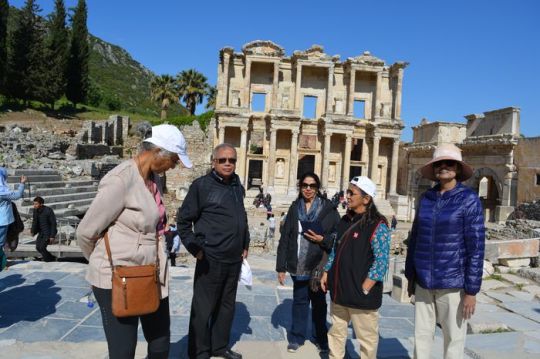
Economic Transformations in Bulgaria
From Turkish Domination to Industrialization
Turkish Rule and Agrarian Economy (1396-1878)
For five centuries, from 1396 to 1878, Bulgaria endured Turkish domination, maintaining an agrarian economy with features reminiscent of medieval serfdom. In the latter part of the 18th century, Turkish landlords leased vast landholdings through izpolitza or kisim systems. In the izpolitza, farmers paid half of their yield to landlords as rent, while the kisim system predetermined rent, irrespective of yield.
Urbanization and Industrialization (Late 18th Century)
Urbanization and industrialization gained momentum toward the late 18th century, leading to a rise in urban population and non-agrarian occupations. This shift modified the primitive agrarian economy to align with the growing demands of urban markets. The 1834 land reform significantly impacted large landholders, fostering increased ownership of medium and small farms. The reform also marked the elimination of angaria, or wageless farm-work. Districts like Plovdiv and Pazardzhik saw crop specialization, with rice cultivation in Plovdiv and the production of rose oil in Karlovo and Kazanluk Guided Istanbul Tours.
Artisan Work and Craftsmanship (First Half of 19th Century)
The first half of the 19th century witnessed the zenith of artisan work in Bulgaria. The Ottoman Empire’s demand for products like coarse woolen cloth, belts, knitted socks, yarn, leather goods, and hardware fueled the growth of craftsmanship. Craftsmen, organized in corporative groups akin to medieval European guilds, followed a strict hierarchy of apprentices, journeymen, and grandmasters. These organizations aimed to regulate production and minimize competition.
“Scattered Manufactory” System and Early Industrialization
The “scattered manufactory” system brought an economic expansion, where affluent merchants supplied raw materials to artisans, receiving finished products in return. These products, including yarn and aba cloth, were then sold in the Turkish market. The initial steps towards industrialization were marked by the establishment of the first machine-run weaving factory in Sliven in 1838.
0 notes
Photo
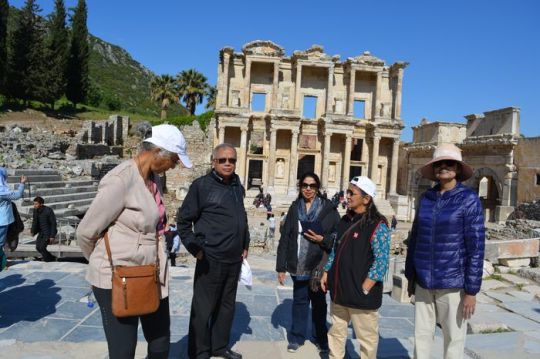
Economic Transformations in Bulgaria
From Turkish Domination to Industrialization
Turkish Rule and Agrarian Economy (1396-1878)
For five centuries, from 1396 to 1878, Bulgaria endured Turkish domination, maintaining an agrarian economy with features reminiscent of medieval serfdom. In the latter part of the 18th century, Turkish landlords leased vast landholdings through izpolitza or kisim systems. In the izpolitza, farmers paid half of their yield to landlords as rent, while the kisim system predetermined rent, irrespective of yield.
Urbanization and Industrialization (Late 18th Century)
Urbanization and industrialization gained momentum toward the late 18th century, leading to a rise in urban population and non-agrarian occupations. This shift modified the primitive agrarian economy to align with the growing demands of urban markets. The 1834 land reform significantly impacted large landholders, fostering increased ownership of medium and small farms. The reform also marked the elimination of angaria, or wageless farm-work. Districts like Plovdiv and Pazardzhik saw crop specialization, with rice cultivation in Plovdiv and the production of rose oil in Karlovo and Kazanluk Guided Istanbul Tours.
Artisan Work and Craftsmanship (First Half of 19th Century)
The first half of the 19th century witnessed the zenith of artisan work in Bulgaria. The Ottoman Empire’s demand for products like coarse woolen cloth, belts, knitted socks, yarn, leather goods, and hardware fueled the growth of craftsmanship. Craftsmen, organized in corporative groups akin to medieval European guilds, followed a strict hierarchy of apprentices, journeymen, and grandmasters. These organizations aimed to regulate production and minimize competition.
“Scattered Manufactory” System and Early Industrialization
The “scattered manufactory” system brought an economic expansion, where affluent merchants supplied raw materials to artisans, receiving finished products in return. These products, including yarn and aba cloth, were then sold in the Turkish market. The initial steps towards industrialization were marked by the establishment of the first machine-run weaving factory in Sliven in 1838.
0 notes
Photo
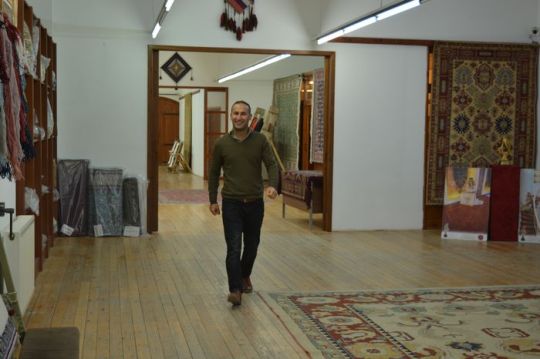
The Reigns of Chervenkov and Zhivkov
Chervenkov’s Rule (1949-1953)
Valko Chervenkov ruled Bulgaria from 1949 to 1953, a period that witnessed the implementation of the first five-year plan for national economic development, known as the peripetia. During this time, Chervenkov introduced typical features of a socialist society, mirroring the Soviet Union. While the era saw grand construction projects on a national scale, such as roads, dams, plants, and buildings, Chervenkov’s leadership also marked the establishment of a “Stalinist personality cult” in Bulgaria, with his own persona elevated above all else.
Bulgaria and the Warsaw Treaty Organization
In 1955, the Warsaw Treaty Organization was founded on May 14th as a military and political union among eight socialist states, serving as a counterbalance to the existing North Atlantic Treaty Organization. This event further intensified the division of Europe during the “cold war” years, with Bulgaria positioned behind the “iron curtain.”
The Zhivkov Era
Following Stalin’s death in 1953, Bulgaria’s communist leadership, including Todor Zhivkov, had to moderate the regime. Todor Zhivkov, a member of the Political Bureau of the Central Committee of the Bulgarian Communist Party, quickly adapted to the changing political landscape, aligning with the new Soviet leader Nikita Khrushchev. Khrushchev’s criticism of Stalin’s “personality cult” at the Twentieth Congress of the Communist Party of the Soviet Union in February 1956 had a profound impact City Tours Istanbul.
Rise of Todor Zhivkov
Todor Zhivkov attracted Khrushchev’s attention, and he began consolidating party and state power. The “Zhivkov era” spanned seven five-year plans for national economic development, marking a significant period in recent Bulgarian history. Until November 10, 1989, Zhivkov remained unchallenged at the helm of the Bulgarian Communist Party, serving as its First or General Secretary of the Central Committee. His leadership of over three decades solidified absolute and undivided control over the party and the state.
The periods of Chervenkov and Zhivkov marked Bulgaria’s journey under communism, witnessing economic plans, political shifts, and a prolonged era of undisputed leadership by Todor Zhivkov.
0 notes
Photo
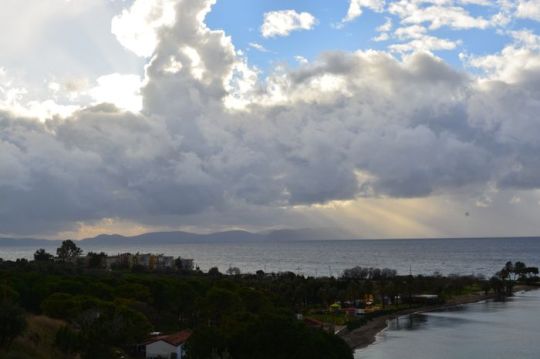
Turkish Villagers Perpetrate Heinous Crimes Against Bulgarian Locals
A Disturbing Pattern of Violence Unveiled
This article delves into the harrowing accounts of violence suffered by Bulgarian locals at the hands of Turkish villagers. From stolen cattle to sexual assault and brutal physical attacks, a disturbing pattern of aggression unfolds, revealing the stark reality faced by the residents of Klissura, Avrat-Alan, Otluk-kui, Philippopolis, Slievena, and Turnova.
Stolen Cattle and Unscrupulous Transactions
The journey from Klissura to Avrat-Alan reveals a brazen display of stolen cattle. Three Turks, offering about thirty head of cattle at a significantly reduced price, provide a glaring example of the unscrupulous transactions taking place. This incident underscores the economic exploitation faced by Bulgarian villagers, adding to their myriad challenges.
A Woman’s Terrifying Ordeal
At Otluk-kui, a woman recounts a horrifying incident of sexual violence. While working in the fields with a man and a boy, they fell victim to Turkish assailants who seized, bound, and violated the woman. The sheer brutality of this act highlights the vulnerability of Bulgarian villagers, particularly women, to the unchecked aggression of their Turkish neighbors Bulgaria Tour.
Victims Bear the Physical Scars
Even in the relatively urban setting of Philippopolis, victims with fresh sabre cuts approach Mr. Schuyler. Two men and a boy display the physical scars of violence endured just days prior. The severity of these injuries, including eight gashes on one victim, illustrates the intensity of the assaults suffered at the hands of Turkish aggressors.
More Tales of Brutality
The narrative extends to Slievena and Turnova, where more victims seek refuge from recent acts of savagery. Fresh sabre cuts, a symbol of the rampant violence, are showcased once again. Even innocent individuals, like the boy delivering dinner in Turnova, fall prey to the brutality of zaptiehs, highlighting the indiscriminate nature of these attacks.
Urgent Call for Intervention and Justice
The relentless violence inflicted upon Bulgarian villagers demands immediate attention and intervention. The article concludes with a plea for justice, emphasizing the urgent need to address this escalating crisis. It calls on local authorities, international bodies, and humanitarian organizations to collaborate in creating a protective framework that shields Bulgarian locals from the relentless aggression perpetrated by their Turkish neighbors.
A Cry Against Impunity
In a final reflection, the article condemns the culture of impunity surrounding these acts of violence. It calls for global awareness and condemnation of the atrocities faced by Bulgarian villagers, urging the international community to unite in holding the perpetrators accountable and fostering an environment where such heinous crimes have no place.
0 notes
Photo
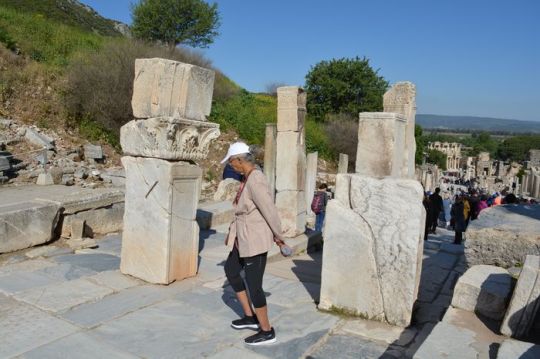
Amidst Beauty and Ruin
Traversing the Charmed and Scarred Landscape of Otluk-kui
The Lush Oasis Within Desolation Houses and Gardens
As one traverses the remnants of Otluk-kui, a village steeped in tragedy, the juxtaposition of comfort and destruction becomes a haunting testament to the resilience of the human spirit amidst adversity. The houses, though now bearing the scars of the recent horrors, once stood as symbols of comfort and solidity. These well-constructed abodes, partly surrounded by gardens and fruit trees, created a picturesque setting where luxuriant foliage hung over walls, offering a charming freshness that now serves as a poignant contrast to the blackened ruins.
The gardens, once vibrant with life, have become silent witnesses to the atrocities that unfolded. The juxtaposition of the verdant greenery against the backdrop of destruction is a visual representation of the dichotomy that defines Otluk-kui—a village that was both a haven of beauty and a theater of horrors. The haunting charm that once emanated from these gardens is now overshadowed by the ghostly echoes of the past.
Saddling Horses, Muffling Cries Journeying to Avrat-Alan
The next chapter of our exploration unfolded as we mounted horses in Otluk-kui, eager to leave behind the haunting scenes etched into the village’s history. The horses, symbols of mobility and escape, were brought to us around one o’clock. Amidst a crowd of onlookers, we embarked on a journey toward Avrat-Alan, also known as Kuprishstitza in Bulgarian—a destination nestled a few miles to the north Travel Bulgaria, higher up in the mountains.
The act of mounting horses, typically a symbol of adventure and exploration, took on a somber tone as the mournful cries of the gathered crowd accompanied our departure. Their cries, laden with the weight of sorrow and perhaps a plea for remembrance, followed us, compelling even the riders to shield their ears from the haunting sounds. The departure from Otluk-kui became a symbolic transition from a place marred by tragedy to the anticipation of what lay ahead in the higher reaches of the mountains.
The journey to Avrat-Alan, set against the backdrop of the desolation left in Otluk-kui, becomes a narrative thread that weaves through contrasting landscapes—from the lush charm of a village ravaged by horror to the promise of new vistas higher up in the mountains. The horses, though serving as mere means of transportation, carried with them the echoes of Otluk-kui’s sorrow, marking the beginning of a transformative expedition through landscapes scarred and untouched.
0 notes
Photo

Mill-wheels are silent
The mill-wheels are silent now. This little valley, with its rich grassy slopes, ought to have been covered with herds of sheep and cattle. Not one was to be seen. The pretty little place was as lonely as a graveyard, or as though no living thing had trod its rich greensward for years. We ascended the slope to the right, and when we reached the top of the ridge which separated it from the next valley, we had a beautiful panorama spread out before us.
The mountains here seemed to extend around in a circle, enclosing a tract of country some eight or ten miles in diameter, considerably lower down, which was cut up by a great number of deep hollows and ravines that traversed it in every direction, and seemed to cross and cut off each other without the slightest appearance of anything like reference to a watershed. It looked more like an enlarged photograph of the mountains of the moon than anything else I could think of Guided Istanbul Tours.
Down in the bottom of one of these hollows we could make out a village, which our guide informed us it would still take us an hour and a half to reach, although it really seemed to be very near.
The hillsides
This was the village of Batak, which we were in search of. The hillsides were covered with little fields of wheat and rye, that were golden with ripeness. But although the harvest was ripe, and over ripe, although in many places the well-filled ears had broken down the fast-decaying straw that could no longer hold them aloft, and were now lying flat, there was no sign of reapers trying to save them. The fields were as deserted as the little valley, and the harvest was rotting in the soil. In an hour we had neared the village.
As we approached our attention was directed to some dogs on a slope overlooking the town. We turned aside from the road, and, passing over the debris of two or three walls, and through several gardens, urged our horses up the ascent towards the dogs.
0 notes
Photo

Mudir’s orders were walked over
We asked them if they could not bring us some saddles also, and this they did with much alacrity, and some chuckling at the way in which the Mudir’s orders were walked over. Finally we mounted and got off. We had been besieged all the morning by the same people who had blockaded us the night before, or who appeared to be the same, their stories were so much alike.
We could do nothing but listen in pity to a few of them—for it would have taken all day to hear each separate tale of misery and suffering—and gave vague promises that we would do all in our power to relieve their misery upon our return to Constantinople. But diplomatic help is, alas ! very slow. While ambassadors are exchanging notes and compliments, inviting each other to dinner, making representations to the Porte, and obtaining promises which nobody believes in, these poor people are starving and dying.
Many of them decided to seize this opportunity and accompany us to Batak, to visit their ruined homes, and others caught our bridle reins, determined to make us listen to their stories before we should start. One woman caught my horse, and held it until she could show me where a bullet had traversed her arm, completely disabling her from work, and this was only the least of her woes Guided Istanbul Tours.
Husband killed
Husband killed, and little children depending on that broken arm for bread ; all of this told in a language so much like Russian that I could understand a great deal of it; so like Russian that I could easily have fancied myself amongst peasants of the Volga, or the denizens of the Gostinoidvor, Moscow. The resemblance is striking, and it is no wonder the Russians sympathies with these people.
You observe the same sort of family likeness about the eyes that may be always seen among brothers and sisters who are utterly unlike each other in features—tricks of countenance, movements of the hands, tones of the voice, even to that curious, uncertain expression of the face, which often in the Russian peasant makes it almost impossible to tell whether he is laughing or crying.
0 notes
Photo

Violated in the presence of her children
Mothers were outraged in the presence of their daughters ; young girls in the presence of their mothers, of their sisters and brothers. One woman told us, wringing her hands and crying, that she and her daughter, a girl of fifteen, had been violated in the same room, another that she was violated in the presence of her children.
A girl of eighteen avowed, shuddering and bowing her facp in her hands, that she had been outraged by ten soldiers. A woman, who came to us on crutches with a bullet still in her ankle, said she had been violated by three soldiers while lying wounded on the ground groaning in agony. Young, delicate, fragile little creatures, ten and twelve years old, were treated in the same brutal manner Turkey Sightseeing.
A woman told us that her daughter, a tender, delicate little thing of twelve, had been seized and outraged by a Bashi-Bazouk, although she had offered all the money she had in the world—although she offered herself—if he would spare the child. Another told us of a poor little thing of ten violated in her presence, with a number of other girls. Still another told us how a dozen young girls, twelve or fifteen years old, had taken refuge in her house, hoping to escape detection; how they had been discovered ; how two of them had been outraged, and killed, because they had resisted, and how the others then submitted to their fate, white, shivering, their teeth chattering with fright.
And yet Sir Henry Elliot and Mr. Disraeli will keep prating to us about exaggeration, forsooth ! The crimes that were committed here are beyond the reach of exaggeration. There were stories related to us that are maddening in their atrocity, that cause the heart to swell in a burst of impotent rage that can only find vent in pitying, useless tears.
0 notes
Photo
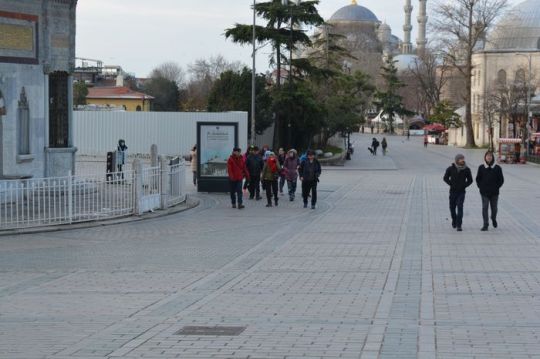
Zwatko Boyadjieff
In another place we were shown a black spot where an old blind man, Dondje Stregleyoff, was beaten half to death, and then thrown senseless on a heap of wood and burnt alive.
There was an old man here, Zwatko Boyadjieff by name, a public benefactor, a liberal contributor to the school fund, who in winter supported half the widows and orphans of the place, who was renowned for his charities to Christian and Turk alike. He was likewise seized, tortured, and maltreated.
His eyes were put out, and, after undergoing the most fearful torments, he was thrown on a heap of wood fainting or dead, the people do not know which, and burnt. They seized the priest Nestor, and cut off his fingers one by one to extort money, and as the poor man had none to give them they continued by cutting off his hands, and finally his head. We were shown in the yard of a neat little cottage, embowered in trees, a grave, beside which a woman was kneeling as we passed.
It was the grave of a young man of eighteen, who had just returned home from school when the troubles began, after an absence of two years, and who had taken no part in the outbreak. They had seized him, and in mere sport cut off his hands one by one in the presence of his mother, then killed him Turkey Sightseeing.
What made these acts more terrible was, that many of them were committed in the presence of the weeping relatives—wife, mother, brothers, sisters of the victims. And they were repeated by the hundred. It would take a volume to tell all the stories that were related to us. But it was not only old and young men who suffered; women, young girls, children, infants, were ruthlessly slaughtered.
These Turks have no pity, no compassion, no bowels. They have not even the pity of wild beasts. Even the tiger will not slay the young of its own species. But these Turks, these strong bearded men, picked infants up out of their cradles with their bayonets, tossed them in the air, caught them again, and flung them at the heads of the shrieking mothers.
0 notes
Photo
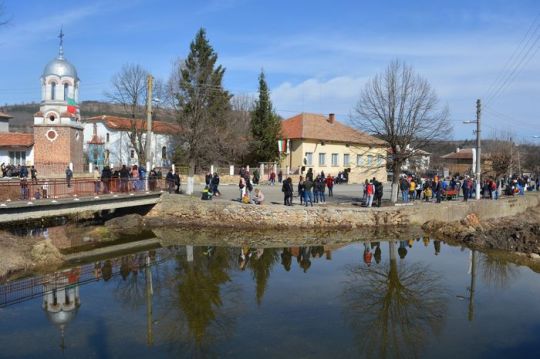
King Ivan II Assen
During a siege of Thessaloniki the third brother also fell victim to another boyar plot: in the autumn of 1207 he was killed in his tent. One of the plotters – and nephew to Kaloyan – King Boril (1207-1218) ascended to the throne. A political crisis broke up. As the usurper Boril initiated a persecution of all Kaloyan’s relatives his two nephews, sons of the old king Assen, Ivan Assen and Alexander, lied to Russia. For some time, however, the conflicts along the borders of the country were suspended due to the treaties with the Lati n Empire and the Hungarian Kingdom but the resentment within sharpened Tours Bulgaria.
A factor that additionally jeopardized the crown became the movement of the Bogomils. So in 1211 Boril held the Council of Tumovo which condemned the new heresy. Uprisings broke up. Taking advantage of the confusion and assisted by a Russian military unit Ivan Assen II laid a continuous siege to the capital Tumovo, dethroned Boril and blinded him. Thus the successor of the Dynasty of the Assenids. King Ivan II Assen (1218-1241) came to the throne.
Ivan II Assen inaugurated a period of prosperity during which Bulgaria regained the frontiers it had achieved under Tsar Simeon the Great.
Diplomacy consolidated
An economic and cultural upsurge marked his rule. The new king’s diplomacy consolidated the state and strengthened the relations with the Latin Empire and Hungary. A peace treaty was signed with the ruler of the Epirus region Theodore Comnenus.
Ivan II Assen even engaged his daughter Elena to the Byzantine Emperor Baldwin II, still under age by the time.
But Theodore Comnenus violated the peace treaty and led a large army north- The Church of the Virgin of Petrich in Ivan II Assens Fortress.
0 notes
Photo

Bishops and the Patriarch’s throne
Gold alone was not thought good enough for the altar; this was therefore made of a combination of gems set in silver and gold. The doors were of ivory, amber, and cedar, the outer one being silver- plated. The seven seats for the bishops and the Patriarch’s throne, forming a semicircle at the back of the altar, were all silver-plated. The building contains nearly every kind of known marble, comprising the green from Laconia, the white, black- veined Bosporus marble, the white Phrygian with its pink streaks, with others from Asia Minor and Egypt. The columns number 107 in all, of which 67 are in the galleries.
More or less extensive repairs have been effected by various emperors and sultans ; the last were in 1848, in the reign of Sultan Abd-ul-Medjid, and were entrusted to the Italian architects, Possati Brothers.
The Mosque of St. Sophia is 235 feet N. and S. by 250 feet E. and W. At its western end is an open court, the ancient Atrium (A), containing a round fountain, used for the Muhammadan ablutions. In the very centre of this court, very probably on the site of the Turkish fountain, stood the Phiale, a large marble basin with two jets of water constantly running, where worshippers performed their ablutions before entering the church, and which bore the inscription, NDBON ANOMH- MATA MH MONAN O’T’IN, signifying ‘ Cleanse thine iniquities, not thy face only curious from the fact of its reading the same whether perused the right way or backwards. The Outer Narthex (B) with its five doors was on the eastern side of the Atrium; and the belfry (C) was over the main entrance private istanbul tour. The Outer Narthex is devoid of any ornamentation; its five doors were called ‘ the Doors of the Armenians from the latter having taken part in the fifth General Council while the doors were being built. These gave access to the Inner Narthex.
MIXAHA NIKHTHN
Both the nartheces were reserved for catechumens and penitents. This latter hall is 205 feet long by 26 feet wide, and its walls and ceiling are covered with mosaic work. At its northern and at its southern sides are low doorways, giving access to the women’s galleries. The South porch, which is a double one, was reserved for the Emperor and his suite; it was erected by the Emperor Theo- philus, and is sheathed with bronze plating bearing several crosses and Byzantine monograms. At the top of the right-hand door is a fragment of an inscription, MIXAHA NIKHTHN (‘Michael of the Conquerors ’). All the doors bear crosses which the Turks have altered to resemble trident prongs.
The nave is entered through nine gates, the central one of which was formerly styled “ Pyle Vasilike ” or Royal Gate, and is that through which the Emperor entered, and where he was met by the Patriarch. On the bronze cornice over the gate is carved a lectern and a copy of the Gospels. The book is represented as open at the passage from St. John : ‘ I am the door : by me if any man enter in, he shall be saved, and shall go in and out, and find pasture ”. The four mosaic figures above this cornice are now but dimly visible through the wash the Turks have put over them. The figure between the medallions of the Virgin and St. John the Baptist is Christ seated on a throne. His right hand holds a volume open at the words ‘ Peace be unto you; I am the light of the world ’; and with his left he is blessing a kneeling emperor.
0 notes